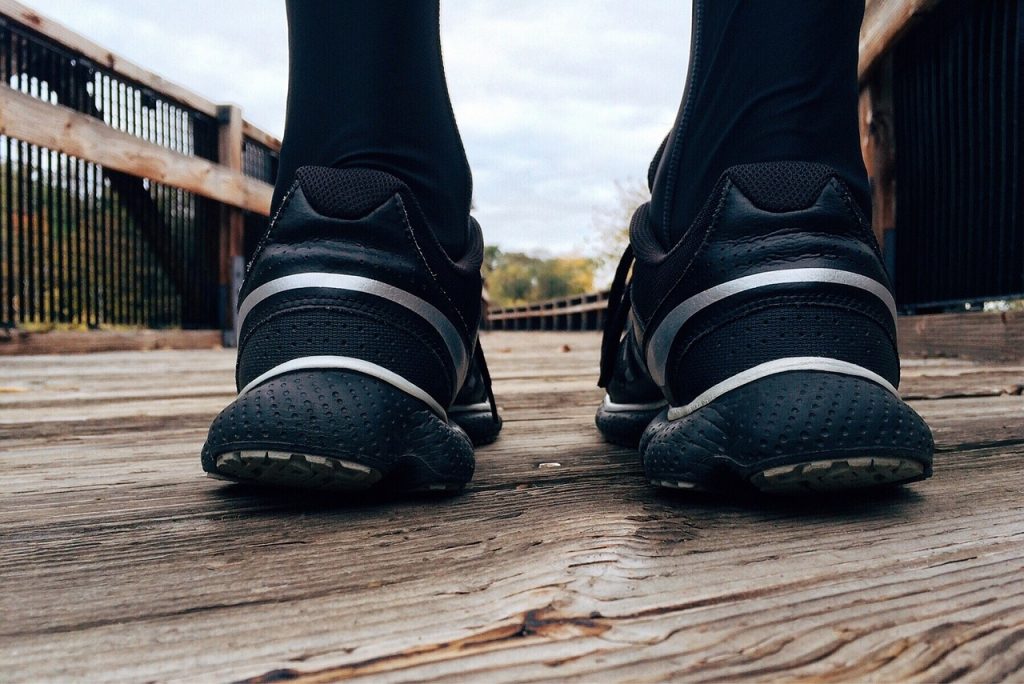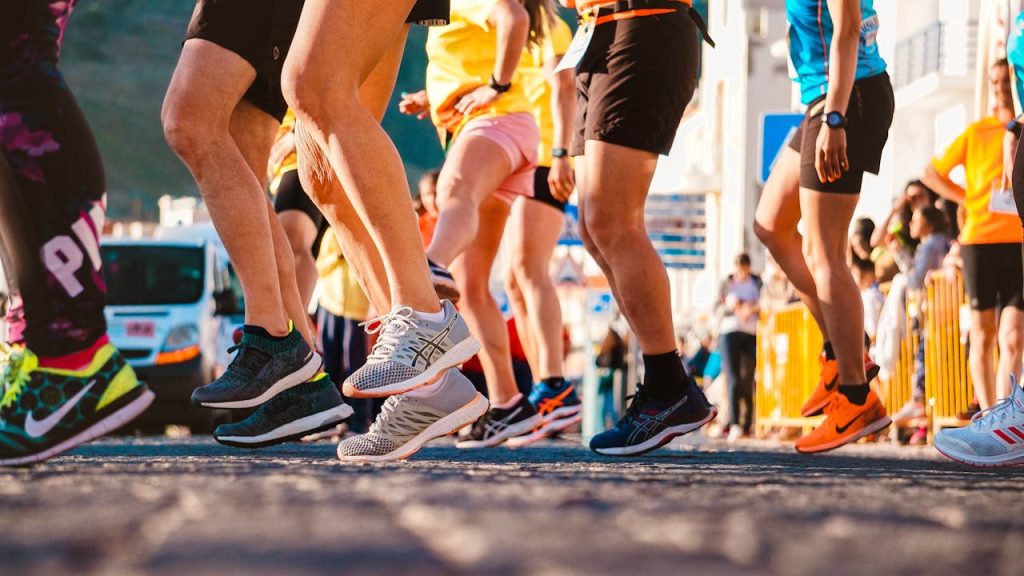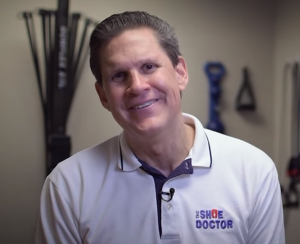Key Takeaways
- Knowing the root of heel pain, like foot structure and running mechanics, is critical to early intervention and prevention for runners.
- Orthotics can help redistribute pressure, support arches, absorb impact, and even correct alignment, making your heels happier and your runs more efficient.
- Both custom and off-the-shelf orthotics offer distinct advantages. Evaluating fit, comfort, and cost helps determine the best option for individual needs and running objectives.
- By choosing orthotics specific to your foot, your stride, and your running shoe, you provide the most comfort possible while supporting the lifetime health of runners’ feet everywhere.
- Holistic foot care with proper footwear, stretching, and strength training does wonders in addition to your orthotics and decreases the chance of plantar fasciitis and related injuries.
- By steering clear of common blunders, like neglecting proper break-in periods and anticipating orthotics to do all the heavy lifting, you’ll be better able to manage and prevent heel pain.
Plantar fasciitis orthotics for runners are insoles designed to reduce heel pain and provide arch support while running. These orthotics help distribute weight across the foot, reduce stress on the plantar fascia, and provide some cushioning at impact. Lots of runners choose orthotics with rigid arch support and heavy padding to reduce pain and inflammation. Certain brands incorporate gel or foam layers to increase comfort, while others provide custom-fit options to better mold to foot shape. Choosing the correct orthotics allows runners to maintain their training and avoid extended time off due to injury. The meat of this post is on how to locate quality orthotics, what to look for, and how to use them day to day.

The Runner’s Heel Pain
It’s one of the most common afflictions for runners — and one that’s intimately connected to the foot’s mechanics and the tension on the plantar fascia. This pain is often a warning of things that, if you ignore, will eventually lead to full-on injuries. Knowing where runner’s heel pain comes from and how it works makes you a smarter person when it comes to preventing and treating it.
- Overuse and microtears in the plantar fascia are runners’ #1 heel pain culprit, particularly when runners make a sudden jump in mileage, speed, or intensity.
- Similarly, running with poor form — like overstriding or excessive heel strikes — can exacerbate the pressure applied to the fascia and heel bone.
- Tight calves, inflexible Achilles tendons, and weak foot muscles cause abnormal loading of the heel.
- Old running shoes without proper cushioning or pounding the pavement increase impact force on the heel.
- Your feet have a significant impact–both flat feet and high arches alter force distribution, increasing your risk of injury.
- If you avoid early heel pain, it frequently results in chronic issues that require extended recovery and more specialized care.
How Heel Structure and Arch Mechanics Impact Every Stride
The plantar fascia is a robust band of tissue spanning from the heel bone to your toes, supporting your foot’s arch and shock absorption during running. It cooperates with the heel bone (calcaneus), which serves as a crucial anchoring point for both the fascia and Achilles tendon.
How the plantar fascia, heel bone, and arch collaborate to sculpt each stride. Flat feet = less shock absorption. High arches focus stress on fewer points. Runners of either foot type experience more injuries, such as plantar fasciitis. Abnormal anatomy alters muscle recruitment, which can generate a vicious cycle of pain and overuse, particularly on long runs or high-impact days.
The Biomechanics
Foot motion, specifically pronation (rolling in) and supination (rolling out), molds the way stress is distributed through the heel and arch. Excessive pronation will stretch the plantar fascia, whereas excessive supination will decrease shock absorption, resulting in pain.
Running style counts. Some runners strike the ground aggressively with their heels, thereby increasing impact forces; others are more fortunate with a midfoot or forefoot strike, which decreases the burden on the heel. Higher heel-toe drop shoes can assist for some time, but don’t solve the underlying issue. Surfaces count as well – soft trails minimize heel pressure, whereas asphalt or concrete can exacerbate it.
Biomechanical efficiency depends on strong, supple calf muscles and Achilles tendons. Stretching and rolling the foot on a tennis or lacrosse ball can loosen tissue and reduce pain.
The Symptoms
A stabbing pain in the heel—particularly intense when rising in the morning or after extended sitting—indicates plantar fasciitis. Stiffness and soreness that improve with movement, yet come back after sitting, are textbook symptoms.
Pain is generally worse with the first steps of the day, then diminishes as the tissue warms up. Chronic cases arrive with a dull, persistent pain that radiates through the foot. Swelling and general tenderness at the base of the heel can be present in some runners.
Others rock between acute and chronic, oscillating between stabbing jabs and a nagging throb as the condition progresses.
The Importance of Early Action
Taking care of your feet early is important. Resting, stretching, and wearing the right shoes can help you heal faster. If you ignore foot pain, it might get worse and take longer to recover. If you have pain for more than two weeks, it’s a good idea to get help. Ongoing pain might mean you need special insoles or medical attention.
How Orthotics Help Runners
These custom insoles don’t just relieve pressure—they help realign your gait, distribute force, and provide optimal support where necessary. Below is a summary of how orthotics help runners with heel pain:
- Redistribute pressure across the foot to reduce pain points
- Support the arch and take pressure off the plantar fascia.
- Cushion the foot to absorb impact and lower fatigue
- Control excess motion to keep the foot stable
- Help correct misalignment, improving running form and efficiency
- Reduce the risk of running-related injuries
- May improve speed and comfort during runs
1. Correcting Alignment
Proper foot alignment is an integral component of wholesome running. Orthotics are designed to reposition the foot. With proper support, they assist in lining up the heel, ankle, and leg. This shift can do wonders for runners suffering from plantar fasciitis, as it can relieve pressure on inflamed areas and reduce discomfort over time.
Equally crucial is to monitor for signs that your painful or otherwise problematic running form is changing. As the foot moves more optimally, runners often find themselves gliding more effortlessly down the road. Over weeks, however, the body adapts, and minor aches can abate as your alignment returns to normal.
2. Distributing Pressure
They work by distributing weight over the entire foot. This relieves stress from the heel and arch, frequent sites of pain for runners with plantar fasciitis. Even pressure equals less risk of overuse injuries. For instance, runners who get sore on one side of the foot may feel better once pressure is balanced.
Different insoles shift pressure to different locations. A thick, soft insole dissipates force nicely, but a firmer one can transfer it to the arch. Choosing the appropriate insole varies by your requirements. A high-arched runner may require more support underneath the midfoot, but a flat-footed runner may need a softer foundation.
Trial and error are usually required. Sometimes a regular insole does the trick. Other times, a custom orthotic is optimal. Seriously, they’re great, but it can take up to four weeks to get a pair made for your foot.
3. Supporting Arches
Most runners have arch pain. A quality orthotic provides support to match your arch type. Proper arch support prevents the stretching of the plantar fascia, which is the source of pain in plantar fasciitis. Research indicates orthotics make runners feel better, scoring higher on comfort and lower on tiredness.
A good arch support can stop the pain from returning. Over time, these insoles help keep your foot in shape. Even post long runs, feet don’t feel as fatigued. There are custom and off-the-shelf options, but the right one is the one that fits your foot and running style.
4. Cushioning Impact
Running puts a ton of shock through the foot. Orthotics with really good cushioning absorb this impact. Stuff like EVA foam or gel can make a noticeable difference in comfort and pace. Runners with cushioned orthotics run faster, research finds.
Padded insoles can reduce tiredness for runners. You can easily notice the comfort they provide. Experiment with various thicknesses to discover which one feels the most comfortable for you.
5. Controlling Motion
Orthotics can prevent the foot from overpronating or supinating. We refer to this as motion control. If the foot moves excessively, it may cause wounds and suffering. Stability features in orthotics – like firmer sides, for example – help keep the foot steady during a run.
Controlled motion can additionally make running excessively feel more glidery. It keeps your joints in line and can’t even make you run faster. If you know you overpronate or supinate, select one that fits.
Types of Orthotics for Runners
- Custom Orthotics: Tailored to the shape of your foot and specific gait issues using 3D scans or molds.
- Over-the-Counter (OTC) Orthotics: Prefabricated and less expensive, often providing general arch support and cushioning.
- Semi-Custom Orthotics: A hybrid option, modified for some customization at a lower cost.
Custom orthotics are generally the most effective for chronic or recurring heel pain.
Choosing Your Orthotic
Runners with plantar fasciitis are confronted with a vast selection of orthotics. The right one for you depends on your foot shape, your running style, and your shoe. Comfort, support, and durability should be balanced with consideration of how the insole complements your lifestyle and running patterns. Orthotics can be custom-made, non-customized, or simple soft inserts. Each provides varying degrees of support, padding, and motion control. The following table shows how different orthotic types pair with different feet and running styles:
| Orthotic Type | Foot Shape Compatibility | Running Style Suitability | Support Level | Cushioning | Durability (approx.) |
| Suitability: Support Level: Cushioning: Durability, high arch) | All (pronation, supination, etc.) | High | Moderate | 2-5 years | |
| Non-customized | Neutral, mild flat/high arch | Moderate pronation/supination | Medium | High | 6-24 months |
| Soft insoles | Neutral, low-impact runners | Light running, casual activity | Low | High | 3-6 months |
Your Foot Type
Start with your foot shape. Your arch height—flat, neutral, or high—affects which orthotic provides the best support. High arches need extra padding in the midfoot, while flat feet benefit from strong arch support to prevent rolling in, which can worsen plantar fasciitis. Neutral arches can use a wider range of insoles but still need a balance of support and softness. Good arch support helps align your feet and relieve pressure on the plantar fascia.
Many find that custom orthotics made from a cast or foot scan offer the best fit, especially for severe cases. Others may find relief by trying different over-the-counter styles to see what feels right. Experiment with various options and pay attention to how your feet feel during and after running.
Your Running Style
How you run is equally as important as foot shape. If you overpronate—your foot rolls in too much—you want an orthotic that controls this motion. Underpronators (supinators) require additional padding at the foot’s periphery. Neutral runners have a little more leeway in their decision, but still need to emphasize comfort and good fit.
Runners who cover dozens of kilometers every week or train at extreme intensity should seek out orthotics with powerful support and a high abrasion rating. So those running less frequently or at a low-intensity level might choose lighter, more cushioned models. Be on the lookout for indications that your orthotic is failing you — pain, blisters, or a loss of stability. If you alter your running style, see if your orthotic still feels appropriate.
Watch how your comfort and speed evolve as you test inserts. Even minor support changes can have an impact on how your feet and legs feel on those long runs.
Your Shoe
Make sure your orthotic fits with your running shoes. Not all insoles are compatible with all shoes. Just be sure the insole doesn’t jam your foot or make the shoe too tight.
Think about your shoe size and if your shoe is constructed for stability, speed, or cushion. Some shoes have less volume, so thinner orthotics may be required. Something like a racing flat or minimalist shoe likely won’t work with thicker/stiffer orthotic inserts.
Try the pair as a whole before running. Shouldn’t sit flat, shift around, or constrain your toes. If your shoes are old or worn, new orthotics may not be sufficient. Quality footwear is a piece of the solution.
Always check that the orthotic adds comfort, not pressure.
Cushioning and Support Preferences
Consider how much cushioning and support you desire. Some runners prefer a soft, plush feel, while others require a hard brace to hold their foot in place.
Soft insoles break down quickly and provide no arch support or motion control, but they can feel nice for short runs or casual wear. Custom orthotics last longer and help keep your foot in line, but cost more and take time to make.
Your preference comes into play here—experiment with different varieties to see what makes your feet feel phenomenal.
Common Runner Mistakes
As a plantar fasciitis runner, you’re probably making the same common mistakes in foot care, either prolonging your recovery or risking further damage. Some of the most common mistakes include:
- Ignoring heel pain and continuing to run
- Not allowing feet sufficient time to regain strength before running again.
- Failing to track pain and stiffness over 24 hours
- Increasing running speed too fast
- Skipping relative rest and overusing injured feet
- Wearing low heel-toe drop shoes or flipping types too fast.
- Not strengthening the foot and calf muscles
- Raising the intensity or frequency of training too quickly
Ignoring Break-In
A lot of runners who put in new orthotics assume they’ll be running pain-free immediately. This is an error. The foot requires time to adjust to the new support and form. Insert the new orthotics for small walks initially. Give yourself a bit more time every day. If you dive headfirst into an extended run, you could wind up with blisters, soreness, or even worse, heel pain.
A few runners experience red spots, sore arches, or pinching when they initially begin using new insoles. These are warnings to take it easy and allow the skin and muscles to become accustomed to the transition. Runners can learn about the break-in period for various orthotic types. Some rigid patterns can last a week or two. Softer ones might require less time, but still require slow going. If the pain or swelling increases, cease and consult a specialist.
Expecting Magic
Orthotics are not a magic bullet. They aid by cradling the foot and dispersing that pressure, which can lead to pain. They don’t repair weak muscles, terrible form, or poor running habits. It’s an error to assume that just popping in a new insole will do the trick. True recovery is treating orthotics as one weapon in your arsenal, along with stretching, strengthening, and smart training.
Establish specific, attainable goals. Some symptom relief may occur shortly, but it frequently requires weeks of consistent use for true healing. Continue to wear the orthotics as recommended, beyond the point where the pain subsides. This consistent style helps avoid having those old issues return.
Mismatching Shoes
One mistake is to pair orthotics with the wrong shoes. If the shoe is too soft, too tight, or not constructed for your specific foot type, the orthotic can’t do its job. Runners also shouldn’t select shoes that fit their feet. A shoe with adequate toe box space and an ideal heel-toe drop is crucial. Most people are switching to a low-drop shoe too fast, which can increase stress and impede recovery.
Make sure the shoe fits well with the orthotic in it. If the foot feels cramped or slips, experiment with a different size or model. Shoes for your running style—road or trail—make the orthotic work even better. Don’t underestimate the importance of a good fit.
Stopping Treatment
Runners quit orthotics as soon as the pain subsides. Now this is dangerous. Plantar fasciitis can recur if you don’t maintain treatment. Monitor your feet. If the pain or stiffness comes back post-run, back off and revise your plan.
Stopping too soon can spell months of sluggish recovery. If issues persist, consult a specialist. Stay with it for a minimum of 12 months to minimize the danger of long-term injuries.
Conclusion
Great insoles can help soften heel pain and get runners back on the road. Custom pieces match your foot form and your everyday run style more closely, but name brands provide quick relief for a lot of people. So, always pair the shoe, foot type, and run requirements. Stick to basic motions such as slow warm-ups and consistent cross-training to reduce the risk. Check the orthotic’s fit and feel frequently. Runners thrive with a plan and clever gear. By all means, adhere to what works, but be receptive to new strategies as your feet and runs evolve. Have tips or want to share a story? Drop a comment and jump into the conversation below.
Frequently Asked Questions
1. What are the main benefits of orthotics for runners with plantar fasciitis?
Orthotics give you arch support, relieve heel pain, and align your feet. They both help shield the plantar fascia while you run, enabling faster healing and relief.
2. Are custom orthotics better than off-the-shelf options for runners?
Custom orthotics provide a tailored fit and support. They typically work better for more extreme or chronic plantar fasciitis. Store-bought orthotics are cheap and for light cases.
3. How do I know if I need orthotics for plantar fasciitis?
If you have heel pain, particularly immediately after running, and rest or stretching does nothing, orthotics might help. See a doctor for an evaluation.
4. How long should runners wear orthotics for plantar fasciitis?
Most runners wear orthotics every day, especially while running. It takes different lengths of time, but most people notice a reduction in pain within a few weeks. Wear as directed by your doctors to prevent a return.
5. Can orthotics completely cure plantar fasciitis?
Orthotics just assist in pain management and healing, but they’re not a magic bullet. Orthotics paired with stretching, rest, and proper footwear provide the best.
6. What features should I look for in good running orthotics?
Search for strong arch assist, padding, and moisture-wicking fabric. Make sure the orthotics sit well in your shoes and hold firm while running.
7. Do orthotics prevent plantar fasciitis in runners?
Orthotics can prevent plantar fasciitis by providing arch support and mitigating pressure on the heel. They are particularly beneficial for runners who have flat feet or high arches.
Struggling With Plantar Fasciitis? Find Real Relief With Custom Orthotics From The Shoe Doctor
If you’re dealing with sharp heel pain or stiffness when you take your first steps in the morning, you may be suffering from plantar fasciitis—a common condition caused by strain on the ligament that supports your arch. At The Shoe Doctor, our custom orthotics are designed to reduce that strain, relieve pressure, and help you walk comfortably again.
With over 20 years of experience, Russell uses advanced 3D foot-mapping technology to create orthotics tailored to your exact foot shape and movement. These orthotics don’t just cushion your heel—they correct alignment, support your arch, and help prevent the condition from coming back. Through our partnership with the Spine & Injury Medical Center in San Jose, we also ensure your whole body mechanics are taken into account for lasting relief.
If you’re in the South Bay Area, schedule your free consultation today. Let The Shoe Doctor help you walk pain-free and reclaim your day—starting from the ground up.
Disclaimer
The materials available on this website are for informational and entertainment purposes only and are not intended to provide medical advice. You should contact your doctor for advice concerning any particular issue or problem. You should not act or refrain from acting based on any content included in this site without seeking medical or other professional advice. The information presented on this website may not reflect the most current medical developments. No action should be taken in reliance on the information contained on this website, and we disclaim all liability for actions taken or not taken based on any or all of the contents of this site to the fullest extent permitted by law.


